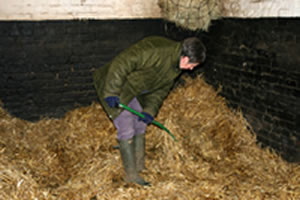Stooped Posture Alone Does Not Cause Lower Back Pain
Correct posture means changing position regularly
Sustained stooped postures and poor movement patterns may cause stresses and strains that could increase the liklihood of you getting lower back pain.
The main findings from the research show that these are the main risk factors:
- Working with the trunk in a bent and twisted position for more than two hours a day - stooped posture(1)
- Not being able to change position regularly. (1)
- Greater than 4 hours in sitting positions with poor ergonomics (44% of computer users developed lower back pain) or driving for more than 4 hours a day (2, 3)
- Working for more than 75% of your work time in front of a computer (2)
- Working under pressure, to get tasks done at speed (2)
- Having little influence on rest time (4)
- Job stress and job dissatisfaction (3)
Advertisement
So it seems that any prolonged position can cause back pain, whether it’s static like
- stooped
- sitting
- standing
- or even lying in bed,
- or whether it’s an active or dynamic posture like repetitive bending.
 Sitting for long periods in a static stooped position can lead to back pain Sitting for long periods in a static stooped position can lead to back pain |
 Bending for a long time can cause problems too. Bending for a long time can cause problems too. |
There is no evidence that one type of activity is more likely to cause back pain then another. It does seem however that the amount of time you spend in postures that are away from the ideal has an effect on whether you develop back pain. If you don’t reduce some of these stresses and strains it will be difficult to get in control of your back pain
Advertisement - Article Continues Below
So, what can you do about stooped posture?
Firstly though please read this section on Normal Posture because until you understand what ‘normal ’ actually is then we can’t talk about improving it. You need to reduce these postural stresses and strains if you are to get back in control of your lower back pain but there are some things that can’t be controlled in some work environments. It’s not always possible to get up and move around when we want to at work. Sometimes we can’t influence work stresses and time pressures, and if your job involves sustained sitting or bending and that’s the end of it, what can you do about it?
Luckily you can do something. The following pages contain some ideas to help you make some small changes that can significantly improve the stooped posture that can cause lower back pain.
Lower Back Pain Toolkit Home Page
What is 'Normal'
Correct Sitting Position
Computer Ergonomics and Correct Keyboard Position
Best Mattress and Sleeping Positions
Proper Lifting Techniques
Advertisement - Article Continues Below
References
1.Van Nieuwenhuyse, A., Somville, P. R., Crombez, G., Burdorf, A., Verbeke, G., Johannik, K., Van den Bergh, O., Masschelein, R., Mairiaux, P., Moens, G. F., & the BelCoBack Study Group 2006, "The role of physical workload and pain related fear in the development of low back pain in young workers: evidence from the BelCoBack Study; results after one year of follow up", Occupational and Environmental Medicine, vol. 63, no. 1, pp. 45-52.
2. Khan, M. Y. & Siddiqui, M. A. 2005, "Prevalence of low back pain in computer users", Pakistan Journal of Medical Sciences, vol. 21, no. 2, pp. 159-163.
3. Chen, J. C., Chang, W. R., Chang, W., & Christiani, D. 2005, "Occupational factors associated with low back pain in urban taxi drivers", Occupational Medicine, vol. 55, no. 7, pp. 535-540.
4. Juul, K. & Jensen, C. 2005, "Self-reported workplace related ergonomic conditions as prognostic factors for musculoskeletal symptoms: The "BIT" follow up study on office workers", Occupational and Environmental Medicine, vol. 62, no. 3, pp. 188-194.
02-Mar-2015




